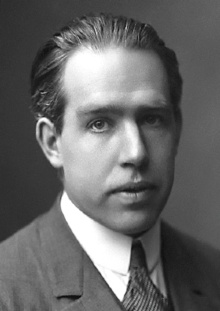In this work, Niels Bohr discusses the development of the atomic theory, including the Rutherford model, the quantum theory and the theories of spectra.
 Niels Bohr, Danish physicist and Nobel Prize winner, whose atomic theories revolutionized quantum mechanics. Discover his quotes and passions.
Niels Bohr, Danish physicist and Nobel Prize winner, whose atomic theories revolutionized quantum mechanics. Discover his quotes and passions.
More about Niels Bohr